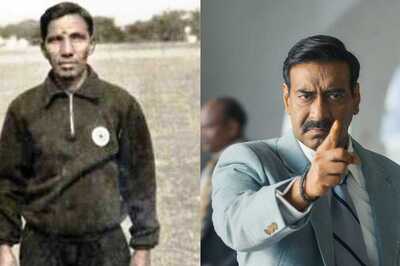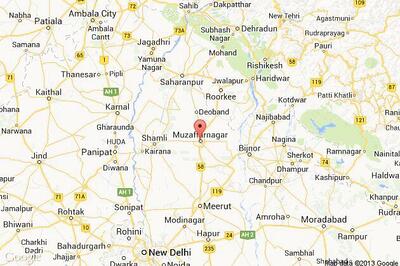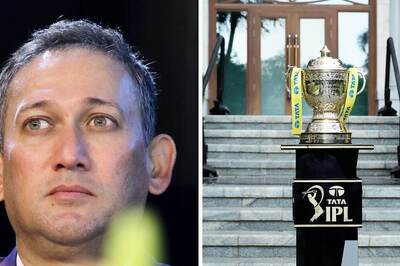
views
The hills are alive with the sound of gunfire, bomb blasts, anti-state slogans and discontent… at least, since June this year. And West Bengal Chief Minister Mamata Banerjee seems to be walking the beaten track of finding ways and means to swing public opinion in her favour. It’s a tried and tested policy that has yielded results for Banerjee in Singur and Nandigram and catapulted her to power in the state six years ago. She hopes for a repeat in Darjeeling to see her through the upcoming 2019 general elections where, doubtless, her primary opponent would be the BJP… a party that has high stakes in Darjeeling hills and its adjacent areas.
The most significant development in the midst of the overt antagonism that has ripped the hills apart in the last five months is, however, the split down the middle in the Gorkha Janmukti Morcha (GJM), the dominant political force in Darjeeling. Considered an undisputed leader of the hills over the past decade, Bimal Gurung is now a fugitive after the Bengal police slapped him and several other leaders of the party with UAPA and various other sections of IPC. While the state police carry out a manhunt for Gurung and even sacrificed an officer during raids at one of his suspected hideouts in the Singla forest area bordering Sikkim, Gurung’s absence from the political scenario of Darjeeling has perceptively led to the Morcha’s control slipping out of his hands.
And once Gurung’s deputy, it’s Binay Tamang who has emerged as the new face of the Morcha. Tamang is not only considered a moderate face of the party who ended up opposing the 104-day shutdown in the hills despite having called the bandh in the first place, he evidently enjoys the full support of the chief minister at this present moment. Banerjee appointed him the chairman of the newly-formed Ad-hoc board of the Gorkha Territorial Administration (GTA) after Gurung resigned from the chair and rendered the semi-autonomous body temporarily defunct. Anit Thapa, another moderate Gorkha leader, has been appointed vice chairman.
That fact that Tamang and Thapa had themselves been at the forefront of the agitation six months ago to pull down the GTA on grounds that it failed to promote hill development seems to have been conveniently forgotten. Both leaders have now agreed to work with the state to restore normalcy in the hills and have attended two out of the three rounds of peace talks with Mamata Banerjee and her administration.
It is at the third round of talks held on 18 October at the state secretariat, Nabanna, that Banerjee urged these moderate leaders to build a consensus on finding a “long term solution” solution in the hills which is “not the separate state of Gorkhaland”.
“It is just a tactic to buy time for Binay Tamang and offer him a long rope to help him establish his leadership within his party,” said former MLA from Kalimpong and chief of the Jan Andolan Party, Harka Bahadur Chhetri. Chhetri, who leads a significant force in Kalimpong, was conspicuous by his absence in the third round of talks despite having attended the first two. Asked why, Chhetri said: “Because I now find that that sole purpose of these talks is to simply promote the Binay Tamang faction of the GJM.”
Calling Tamang “an appointee of the chief minister”, Chhetri alleged, “Mamata Banerjee is hardly serious about finding a permanent solution in the hills. She is not looking beyond the 2019 elections and all she wants is to garner people’s emotions against the BJP for the 41 MP seats in the plains.”
Even if we treat that reasoning with a pinch of salt, there is little doubt that Tamang is Banerjee’s trump card to ensure that the demand for Gorkhaland fizzles out, even if temporarily. And, of course, to try and use him to counter the hardliners within the GJM who still remain faithful to leaders like Gurung and Roshan Giri who continue their crusade for separate statehood from hiding.
It bears recall that the smiling face of Gurung sharing the dias with Banerjee at Pintail Village in the foothills of Darjeeling five years ago when the GTA accord was signed, led the chief minister to go to town with her assertion “paharh haaschhe” (the hills are smiling). The face may have changed. The tactic, barely so.
The Trinamool Congress, though, believes that a long-term solution in the hills is possible minus statehood, but it won’t spell out what that is. “The hill parties must first explore what those possibilities are. They must first come with their suggestions. It would be inappropriate for us at this point in time to spell them out,” said Gautam Deb, minister for North Bengal Development department. He confirmed though that a tripartite meeting between the Centre, the state and the hill parties to discuss separate statehood are off cards at present.
In the midst of this rapidly developing context, Bimal Gurung’s desperation to make a reappearance in Darjeeling is understandable. He wants to reclaim the mantle he is fast losing grip over. Several audio messages from the leader in underground suggest he wants to resurface before 30 October. That, certainly, would be a tight rope walk given the state police’s so-called finalised “blue-print” to nab him before he achieves his goal.
But Morcha leaders from Darjeeling are keen to avoid a fresh confrontation. “We want to impress upon the state and the Centre to take another view at this situation and reach at an amicable settlement between our leader and the chief minister,” said Amar Singh Rai, GJM MLA from Darjeeling and a known Gurung loyal. “We know that if Banerjee walks half way, so must Gurung. Problem is ever since he has gone underground, we have no way of reaching him,” he added.
Asked what that half way would be, Rai said: “We would urge him to surrender and ask the state to drop the serious charges against him.” He, however, admitted that with the recovery of huge cache of arms and ammunition from Gurung’s hideout and the state keen to establish his connections with insurgency groups of North East and Maoists, his “hopes for that settlement is fast dwindling”.
Rai is among the three hill MLAs who have come on board for the peace talks with the state administration. “Initially I wasn’t keen to attend the meetings because I did not trust this government. It was Gurung who forced us to join the meetings so that we could press our demand for a composite dialogue with the home ministry for statehood,” he explained.
Rai feels there is no middle path for a “long term solution” other than discussing statehood. “I have no idea how a consensus can be reached if Gorkhaland is off the talk tables. Settling for anything less would mean fresh trouble in the hills,” he said.
Chhetri believes that the current imbroglio is a creation of the GJM, or the party’s inability to foresee the long term impact of its actions. “The advantage that Mamata Banerjee now enjoys was handed over to her in a platter. The bandh was absolutely unnecessary. And the violence was orchestrated so that Gurung could regain lost ground by whipping up emotions of the hill people. It was sheer stupidity of the GJM that has resulted in this situation,” Chhetri asserted.
With tea and tourism – two of Darjeeling’s economic mainstay – taking a serious hit on account of the current crisis, no prizes for guessing who might be at the receiving end of this battle to fulfill political ambitions. Legitimacy and emotions for the separate state of Gorkhaland notwithstanding, attempts to brush the real issues of the hills beneath the carpet would only drag the inevitable… more unrest. The jury is out on how many elections would pass by.




















Comments
0 comment